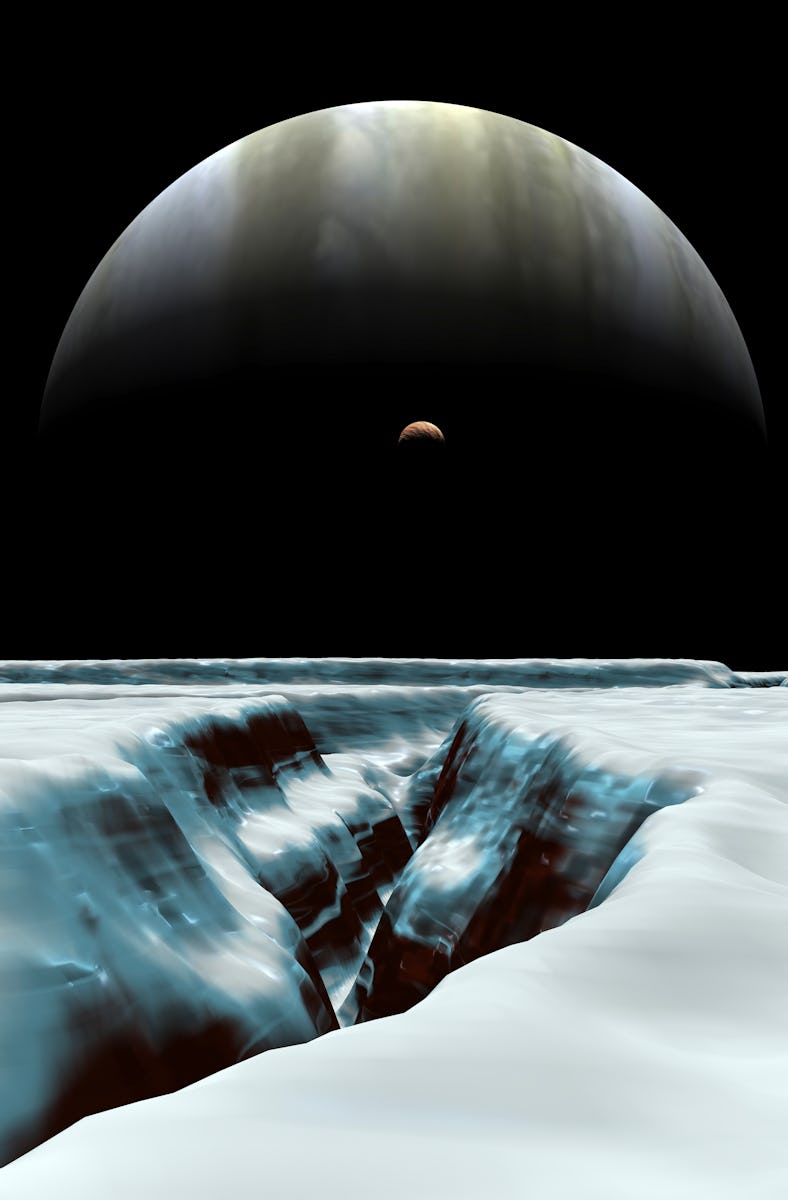The Webb Telescope Finds Key Ingredient for Life on Jupiter's Moon Europa
There's a new report from Europa, and it looks like good news for alien-hunters.

Europa’s ice-covered ocean contains a key ingredient for life, and the James Webb Space Telescope (JWST) just spotted it splashed across the surface of the little moon’s jagged ice.
Observations with JWST’s NIRSpec instrument found frozen crystals of carbon dioxide on the ice covering the surface of Jupiter’s moon Europa. That could mean that Europa’s vast, ice-crusted ocean has another of the key chemicals needed to support life. It could also mean that when Europa Clipper arrives in 2030, it will find plenty of ocean contents splashed across the icy moon’s surface in plain sight.
Cornell University planetary scientist Samantha Trumbo and her colleagues published their results in a recent paper last week in the journal Science; NASA Goddard Space Flight Center planetary scientist Geronimo Villanueva and his colleagues published their own results in a second paper, also out last week in the journal Science.
“Understanding the chemistry of Europa’s ocean will help us determine whether it’s hostile to life as we know it, or if it might be a good place for life,” says Villanueva in a recent statement.
Europa’s Molecular Flotsam
In this 1979 image, Europa (right) and Io (left) are dwarfed against the immensity of Jupiter. But this unlikely, strange little world in the shadow of a gas giant may be one of the most habitable places in our Solar System.
Infrared spectra measured with one of JWST’s instruments, NIRSpec, revealed that the broken, jumbled ice of an area called Tara Regio is spattered with frozen carbon dioxide. And they’re pretty sure it came from the vast, salty ocean lying beneath the ice, which spans Europa’s entire circumference — and might eventually turn out to be hiding alien life in its depths. That’s good news for the prospect of life on Europa because it suggests the ocean under the ice is laden with carbon, an essential ingredient in life as we know it.
Tara Regio is what planetary scientists call “chaos terrain”: a crazed jumble of broken ice chunks, shuffled around and then refrozen into messy patterns and wild angles. Chaos terrain happens when a plume of warm ocean water wells up from the depths, melting a vast lake in the ice (a lot like what happens when a mantle plume here on Earth creates a magma reservoir in the crust, except with water instead of molten rock). Atop the lake, the icy crust cracks up, and the drifting slabs of ice mingle and collide until they eventually refreeze.
And that process is probably how carbon, salt, and other material from Europa’s dark, hidden ocean ends up smeared across the ice.
“Previous observations from the Hubble Space Telescope show evidence for ocean-derived salt in Tara Regio,” says Trumbo in a statement. “Now we’re seeing that carbon dioxide is heavily concentrated there as well. We think this implies that the carbon probably has its ultimate origin in the internal ocean.”
In 2019, scientists found evidence that Europa’s ocean also contains sodium chloride, which also makes up most of the sea salt (and table salt) here on Earth, so the more we learn, the more habitable the ice-covered moon looks.
A Hint of Things to Come
We’ll probably learn even more in a few years when NASA’s planned Europa Clipper mission reaches the Jupiter system. Villanueva says the recent carbon dioxide findings show that water from the ocean beneath Europa’s ice does reach the moon’s surface — something planetary scientists have been debating for years — and it brings along samples of its mixed-in molecules, like salt and carbon dioxide. Just by flying close to Europa, the Europa Clipper spacecraft should be able to measure some of what’s floating around in the moon’s hidden ocean.
“We may be able to learn some basic things about the ocean’s composition even before we drill through the ice to get the full picture,” says Villanueva in a recent statement.
Europa Clipper is currently set to launch in 2024 and reach Europa by 2030.
This article was originally published on